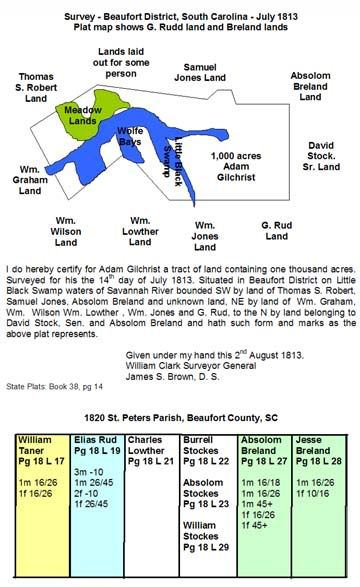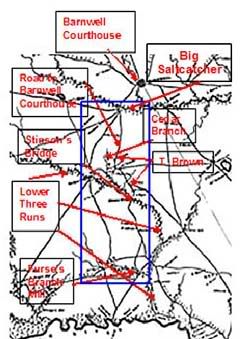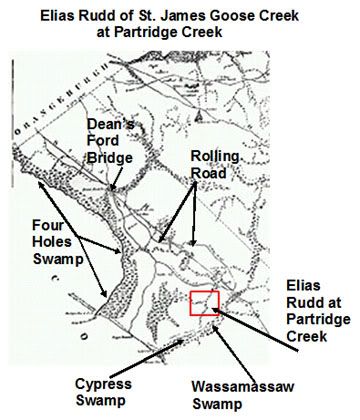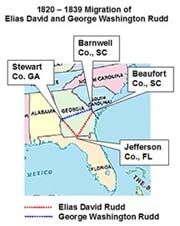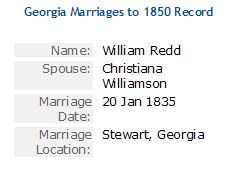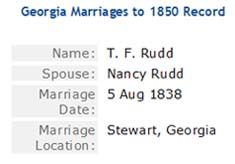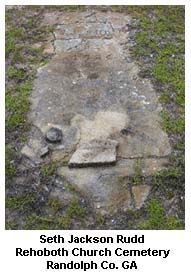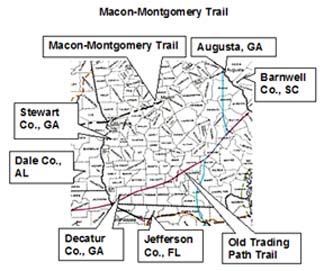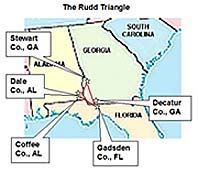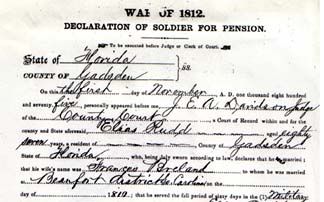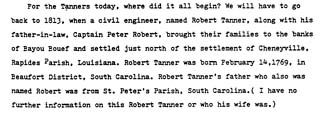Discovering the Two Unknown Daughters

I’ve always been fascinated by the courage it must have taken to pack up your family in a wagon, leave all you’ve known behind and set out for new land. What drove Elias David, and later George Washington, to such aspirations?
I can tell you that based on my research of the Rudd families in South Carolina after the Revolution, I have developed in my senses that we are looking at two distinct families that are bound by a common ancestor, but appear to have taken different paths, set different priorities. In Charleston, we have the George Lounsdell Rudd, Sr. clan who are land wealthy, live in what appears to be more of an affluent society, their neighbors are socially influential. In Barnwell and St. Peter’s Parish, Beaufort the family of Elias David and George Washington appear to be living rather modestly, out of the two brothers, only George appears to own land and the area is very rural as compared to the Four Hole Swamp area at St. James Goose Creek.
You can view the South Carolina land records that I have transcribed
HERE. Soon I hope to have the North Carolina land records transcribed for your viewing. But I will tell you now, George Lounsdell appears to be very land wealthy in North Carolina too as compared to Burlingham 2nd.
In reading
“The History of Beaufort County, South Carolina, Volume 1 1514-1861” I came across two interesting passages I want to share with you. In the first passage, the authors are describing the living conditions in St. Peter’s Parish as compared to the two other Parishes in the county. St. Peter’s was the “poorer” of the other two because most of Beaufort at the time was plantations for growing cotton and later rice with many absentee landlords that generally lived in Charleston. The plantations hadn’t yet spread to St. Peter’s Parish at the time when Elias David was living there. It might be that eventual push of large plantations to the Savannah River that made the Rudds feel they needed to move west.
Page 304-305
Even the wealthier of the resident families of upper St. Peter’s Parish lived plain and modest lives compared to the style of Charleston, Savannah, and Beaufort. In 1821, Charlotte Verstille, a New England schoolmistress who had moved to Robertville with her husband, Tristram Verstille, a headmaster and mistress of the Black Swamp Academy, described the homes of the more substantial planters of upper St. Peter’s Parish:
These buildings can boast neither of a cellar nor an upper story – all the rooms being on the surface of the ground. Glass windows are quite a rare luxury, light being admitted by throwing open a wooden door swung on hinges where the windows should be. When found necessary to guard against the cold, the light is sure to be excluded. It is surprising how many comforts these people of wealth will voluntarily deny themselves … the grand staple here is bacon – bacon and collards … you will find it on every table in every season.
I’ll remind you that Robertville and Black Swamp are the area of the
1813 land survey where we see land owned by G. Rud and the location of Elias David and Fannie on the
1820 Beaufort Co. census. We can imagine that if the wealthier residents of St. Peter’s Parish lived as such, so did Elias David and Fannie, if not with lesser.
This was a time when the United States was expanding. There had been the Louisiana Purchase in 1802, the Mississippi Migration out of St. Peter’s Parish began as early as 1806. Alabama Fever struck when Alabama became a territory in 1817.The Missouri Compromise in 1820, then in 1822 the Florida Territory was established. All of these probably created a yearning inside of Elias David to establish his own. It doesn’t appear that he owned his own land in South Carolina, or at least I’ve found no record of it. I feel certain though that the location of his residence in the 1820 census is land owned by G. Rudd, probably his brother.
I’m sure Elias David was a farmer, perhaps a planter, most likely cotton and rice. There is no record that either of the brothers owned slaves. That’s another big difference between the Charleston and Barnwell clans. And since they didn’t have any slaves, their farms were most likely small and the families were self-sustaining.
Now, let me share with you another interesting passage from
“The History of Beaufort County, South Carolina”.
Page 325
In the chapter “Savannah River Rice Plantations” there is a reference to an 1852 hurricane that devastated the Savannah River area up to Augusta, GA. The Savannah newspaper noted, “The extent of the damage to the crop is impossible to estimate but known to be great.” Two years later (1854) another hurricane swept ashore. It was said to be “the most destructive storm since 1824,” Three-quarters of the rice crop on the Savannah River was destroyed by high water.
So according to this account, in 1824 there was a hurricane that hit Beaufort County that was a destructive storm and was only surpassed in it’s destruction by the storm of 1854. That probably contributed to Elias David’s motivation to move westward.
We know from the reporting of birth location of Elias David’s children that he left Beaufort Co., SC sometime after Rachel Delila was born in September 1826 and the birth of James C. B. in about 1830. And we know that Elias Rudd is listed in the 1830 Jefferson Co., FL census.
I’ve always been intrigued that the children all report they were born in Georgia until the last child, Sarah, who reports she was born in Florida in 1838. We had no record of Elias David in Georgia, but we know that the location in Jefferson Co. FL is on the border with Thomas Co. GA.
Maybe Elias David thought he was in Florida? Maybe when the time came for the birth of the children, Fannie traveled across the state line to a location in Georgia to give birth? However it happened, for years in the census records those children report they were born in Georgia, not Florida.
One thing I think is probably sure; Elias David and Fannie didn’t set out for Florida by themselves. When you look at the families in Beaufort and Barnwell counties, many of them followed the same migration into Florida, Georgia and Alabama. Some of them married into the Rudd family, but many more of them can be seen as neighbors in the new lands. Most likely they migrated out in groups and it’s likely that followed the Old Trading Path trail that ran from just across the old Barnwell and Beaufort area of South Carolina on the Savannah River and crossed Georgia somewhere around upper Thomas Co. GA heading west and crossing the Chattahoochee River at the junction of Jackson and Gadsden counties in Florida ending somewhere near Pensacola Bay.
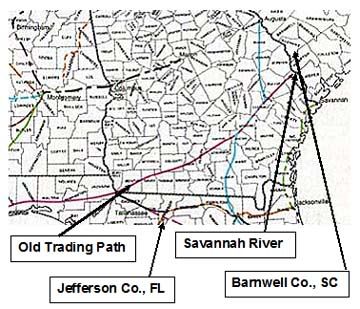 Click for a larger view
Click for a larger view
Why Jefferson Co. FL? We will never really know why but here’s a little of the history of early Jefferson Co. FL.
The first Europeans to enter what was to become Jefferson County were the members of Panfilo de Narvaez's expedition. They passed through an Apalachee town in 1528. In the 17th century, the Franciscans administered five missions in the county along an east-west line near what would become U.S. Highway 27. These missions were destroyed at the beginning of the 18th century by the English governor of South Carolina in retaliation against Spanish depredations. When American settlers entered the county in the 19th century, the land was occupied not by the Apalachees, who had been dispersed when the missions were abandoned, but by Miccosukees, a branch of the Creeks who became part of the Seminole group.
Florida was ceded by Spain to America in 1818. Settlement of Jefferson County was spurred both by its proximity to Tallahassee, the newly selected capital, and by the suitability of its soil for cotton cultivation. Early settlers bought large tracts of virgin forest, or, if they could, the old fields of the Indians. They cleared this land to plant cotton.
Jefferson County was separated from Leon County in 1827. The county, named for Thomas Jefferson, was established January 6, 1827. Monticello, named for Jefferson's Virginia home, was named county seat before statehood, while Florida was a territory of the United States. Monticello remains the county's only incorporated city.
Robison's Post Office was named its county seat, superseding the older settlement of Waukeenah. The county seat was soon renamed Monticello. The county quickly acquired its first school, the Jefferson Academy, and a courthouse. Its prosperity suffered in the late 1830's when many of the settlers went to fight in the Seminole War. The failure of the Union Bank in Tallahassee also affected the county. In the 1850's, county residents who had been endeavoring to make the Wacissa and Aucilla Rivers navigable by canals adopted the railroad instead as their means of transportation. The arrival of the train at Station Number Two signaled the birth of Lloyd, which prospered with the railroads until the 1930's. The railroad also gave a boost to Aucilla, but Monticello was left stranded three miles north of the main track.
It’s believed that Elias David settled somewhere near Monticello which is approximately 10 miles for the Georgia state line. I’ll call your attention to this statement:
“suffered in the late 1830's when many of the settlers went to fight in the Seminole War”. I’ve always thought that perhaps the reason Elias David left Jefferson Co. FL was because of the unrest with the Seminoles. I now think another reason he left was to join his brother George Washington’s family in the Stewart Co. GA area. I’ll tell you more about that in the next segment.
In the 1820 census we see that Elias David and Fannie have 5 children under the age of ten years old in their household, 2 females and 3 males. We know that those three males are mostly likely William Wesley born 1815, Seth Jackson born 1818, and Elias Trowell born 1819. Now, if it was the case that Fannie was a widow when she married Elias David it could be that one of the female children is from her previous marriage. But we know that she was married to Elias David in 1810, ten years earlier, and that William Wesley was born in 1815, five years into the marriage, so my educated guess is that these female children are both the daughters of Elias David and Fannie.
A few years ago, before I discovered these two female children in their household, I had stumbled upon a marriage listed for Martha Rudd and James Carter (misspelled as Catrer) in Jefferson Co. FL on January 8, 1835.
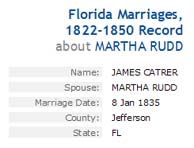
We have evidence of Elias Rudd in the 1830 Jefferson Co. FL census on page 162, the last line. On page 165, line nine is Joseph Carter and on line ten is Jacob Carter. Also in the 1830 Madison Co. FL census (which is the adjacent country) is Elizabeth Carter, in 1840 she appears in the Jefferson Co. FL census. In 1840 Thomas Co. GA, census at Thomasville (which is adjacent Jefferson Co. FL across the state line) we see James Carter, 20-30 years old with two children under 10. And in the 1840 Stewart Co. GA census is a Jacob Carter. He’s no longer listed in the Jefferson Co. FL census. This is all circumstantial evidence, and the name Carter is very common. But there is no disputing the evidence that a Martha Rudd married a James Carter in Jefferson Co. FL in 1835 and there is no evidence there is any other Rudd family neither in Jefferson Co., FL or adjacent counties, nor in all of Florida before or during the time that Elias David was there.
Then…
A couple years later, I received an email inquiry from a Peak family researcher who was looking for the Rebecca Rudd who married Thomas Peak. He was aware that in the 1850 Stewart Co. GA census there is his Thomas Peak living near Seth Rudd. This researcher was working off of old research done by a member of his family and passed to his father. His goal was to identify this mystery Rebecca Rudd as a gift to his father. He knew his Thomas Peak had come out of upper St. Peter’s Parish, Beaufort Co. SC but he couldn’t find a Rudd there. (Of course not! Elias is listed in the index as Reed!) I was very surprised when I received the family group sheet for Thomas Peak and Rebecca Rudd and it listed their marriage in 1833 Jefferson Co. FL! Surely the person who originally did this Peak family research could not pull something like this out of the air. Especially since there is no evidence that this Peak family was ever in Jefferson Co. FL. As a matter of fact, the person I was communicating with asked me if I thought that was a mistake and it was actually Jefferson Co. GA since that county is adjacent to Burke which is across the Savannah River from the St. Peter’s Parish area in Beaufort Co., SC where Thomas Peak’s family came from. Well, that might be possible, but I don’t think it’s likely. He was under the impression that perhaps Rebecca was a Rudd living in that part of Georgia. To my knowledge, there is no Rudd in Jefferson Co. GA in the 1830. There is a Rud in Richmond in 1830 which is adjacent to Jefferson Co. and Burke Co., but I just think that when you add in the evidence that both the Peak family and Elias David were living in upper St. Peter’s Parish at the same time, add to that this old Peak research lists Thomas and Rebecca married in Jefferson Co., FL and in 1850 both Thomas with Rebecca and Seth Jackson Rudd (son of Elias David) with Nancy are living in Stewart Co., GA very near each other. And here’s another interesting fact. In 2002 when Jacque Rudd and I visited Seth’s grave, there were descendants of Thomas Peak buried in the same graveyard, Rehoboth Church Cemetery, Randolph Co. GA. And Thomas Peak’s Last Will and Testament was filed in Randolph Co. GA where he died as did Seth and wife, Nancy. There is obviously a relationship between Seth Jackson and Rebecca Rudd, wife of Thomas Peak.
So I’m going to propose that the household of Elias David and Fannie in 1820 Beaufort Co. SC looked like this:
3m -10 ..... William Wesley, Seth Jackson, Elias Trowell
1m 26/45 .. Elias David
2f -10 ...... Martha and Rebecca
1f 26/45 ... Fannie
Now it is possible these two females are the daughters of George Washington Rudd, Elias David’s brother. But I’ve never found any evidence of George Washington Rudd in Jefferson Co., FL. And let’s recall what the James Dallas letter said about his grandfather George W. Rudd:
"My grandfather Rudd's name was Geo. W. Rudd. He came from N.C. & settled in GA. He had a brother Elias Rudd.”
Before I live this, let me tell you what I think about the 1830 Jefferson Co. FL census because I think it has contributed to so much confusion about the parentage of William Wesley.
The household looks like this: Elias and Fannie, with 4 boys and 3 girls.
1m -5
1m 5/10
2m 10/15
1m 30/40
1f -5
1f 5/10
1f 10/15
1f 20/30
And the children born at the time look like this: Elias and Fannie, 5 boys and 4 girls.
1811 c. ......... Martha
1813 c. ......... Rebecca
1815 Mar 22 ... William Wesley
1818 ............ Seth Jackson
1819 Feb 28 ... Elias Trowell
1822/3 c. ...... Mary
1824 May 2 .... Samuel A.
1826 c. ........ Joshua
1826 Sept ..... Rachel
First, let’s keep in mind that census records aren’t always reliable and we don’t know the circumstances of the recording of this information. Did someone give the information? If so, we don’t know who. Did the census taker just guess at it based on who he saw at the time? Was it properly transcribed? One thing that I’ve already pointed out is that Fannie’s age is recorded incorrectly. She and Elias David were married in 1810, they have now been married 20 years, therefore, and she is NOT 20/30 years old! She’s most likely somewhere between 36 and 40 years old.
There has been speculation that Fannie and Elias David had a son named Joshua born about 1826. I don’t doubt that Elias David and Fannie had a son named Joshua. I tend the believe that information came from a source that had that knowledge, perhaps an old family bible that has been lost, perhaps it was Mallie Croft Erickson’s interviews with Harriett Finn and Mary Sadberry in 1930 and 1938.
When I began the Rudd family research, many people shared information with me and everyone included a son named Joshua living in the 1830 census but not listed in the 1840 census, nor is there any estimated death date, no family story of how he died. In 1840 he would not have been old enough to be on his own and if he was, he surely would have shown up in the census somewhere because we can see how clannish the Rudds are. So I have to assume that someone years ago was told that Elias David and Fannie had a son named Joshua that died as a child and they could give no more information or surely it would have also been recorded just as his name was.
Therefore, I think we have to give consideration that he might not have been living in the 1830 census. If Joshua was born in 1828 and died before 1930 he wouldn’t be reflected in the 1830 census. And giving a one year adjustment for the ages of Elias Trowell and Samuel A. the 1830 household could look like this:
1m -5 ...... Samuel A.
1m 5/10 ... Elias Trowell
2m 10/15 .. Seth Jackson and William Wesley
1m 30/40 .. Elias David
1f -5 ........ Rachel
1f 5/10 .... Mary
1f 10/15 ... Rebecca age 17 or Martha age 19
1f 20/30 ... Fannie (Fannie married in 1810, she is 30/40)
Yes, that does still leave the problem that we’ve got one too many daughters to account for who aren’t yet married, but that doesn’t necessarily mean they are living in the household.
I’ll propose another scenairo.
Joshua is living in the house and William Wesley is absent. And the 20/30 year old female isn’t Fannie, it’s one of the unknown daughters, perhaps Martha who would be about 19 years old. Because Fannie is about to give birth to James C. B. who was born about 1830 and Wesley has taken her to Georgia.
My point is that, we can’t make judgements based on one census. We have to look at the big picture and take into consideration all the clues that are presented to us.




